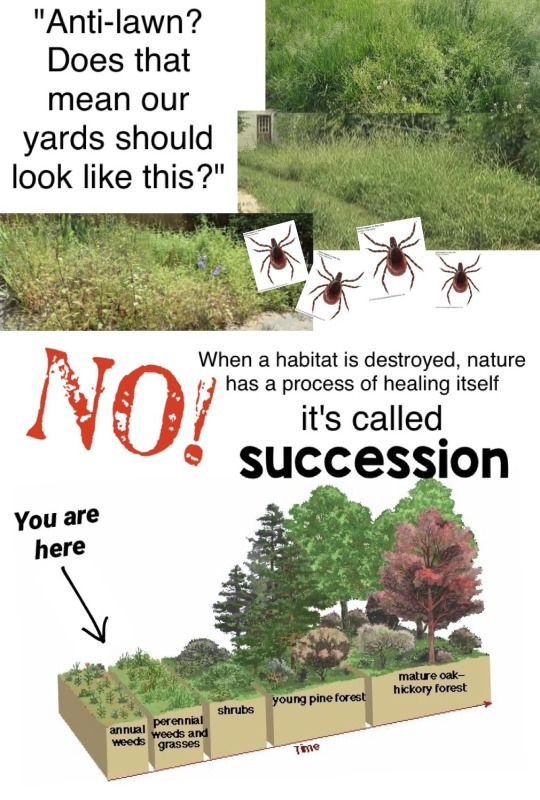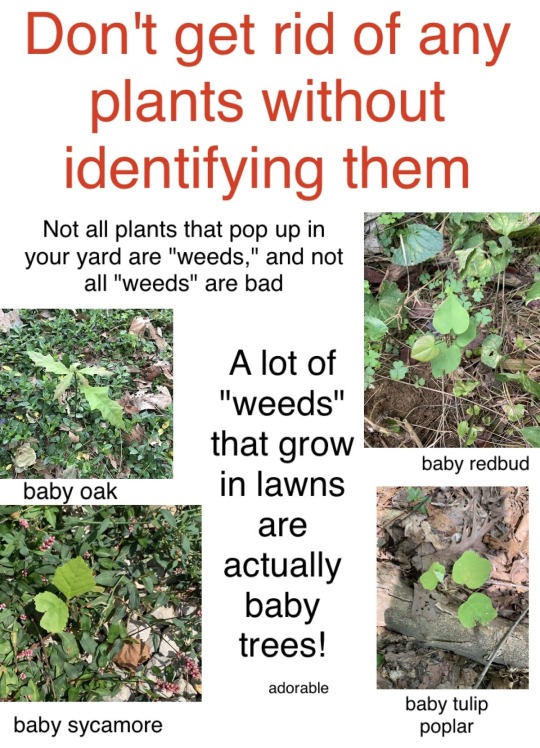#Lupinus albifrons
Explore tagged Tumblr posts
Photo


Lupinus albifrons var. collinus
This lupine species is native to coastal central California, form the vicinity of San Luis Obispo northward to the San Francisco Bay Area. It makes a neat mound of leaves with a silvery glint (due to the reflective hairs on its leaves). Lupines belong to the Pea Family (Fabaceae).
-Brian
63 notes
·
View notes
Text
Here is what my yard looks like after 3 years of rooting out invasive weeds and nurturing natives (plus a rosebush & a lavender bc i love them)! The main herbaceous carpet is Lippia repens. Also ft. Lupinus albifrons (silver bush lupine), Eschscholzia californica (California poppy), Salvia 'Elk Blue Note,' & Penstemon heterophyllus 'Margarita BOP' (penstamon).









I...tried to make a meme and got carried away and made A Thing that is like partially unfinished because i spent like 3 hours on it and then got tired.
I think this is mostly scientifically accurate but truth be told, there seems to be relatively little research on succession in regards to lawns specifically (as opposed to like, pastures). I am not exaggerating how bad they are for biodiversity though—recent research has referred to them as "ecological deserts."
Feel free to repost, no need for credit
188K notes
·
View notes
Photo

Shi Photography has captured a Whiteleaf Lupine overlooking a mountain! Everyday is a beautiful new trip! This Shi Photography series of flower photographs is presented here for your inspiration. // My Print Shop //
#photography#design#nature#lupinus albifrons#whiteleaf lupine#purple flower#botanical#flower photography#blossoms#humboldt#california coast#usa#america#travel#wanderlust#landscape photography#springtime
1 note
·
View note
Photo

Lupinus albifrons is a member of the pea family and grows through a broad range of northern Baja California up through southern Oregon. Known as the silver bush lupine, it inhabits many habitats with the common trait of being open spaces with fairly dry conditions. Once established, a deep taproot allows it to draw what little moisture it needs to persist even through hot, dry summers. It produces often copious, fragrant blooms in late spring through early summer and mutable leaves which can become more or less silvery depending on the growing conditions. Notably, this species is one of three which can host the federally endangered mission blue butterfly (Icaricia icarioides missionensis). The larvae which feed on the plant become toxic due to the same compounds which make the foliage resistant to herbivory in general. This is in fact a contributing factor to the butterfly’s endangered status as many of the host plants were removed because of their toxicity to livestock.
#lupine#lupinus#species#chaparral#habitat#california#western#coastal#seedpod#fruit#postfloral#neutrals#herbarium#specimen#macro#details
68 notes
·
View notes
Text



Silver lupine (Lupinus albifrons) in bloom.
The leaves have a really cool feathery texture and palmate shape. Plus the color of the flowers is really pretty.
15 notes
·
View notes
Text

Silver lupines (Lupinus albifrons)
0 notes
Photo



A sampling of brand new natives planted on the 2 native Hügels on 4/23: From the top: Silver Bush Lupine (Lupinus albifrons), Indian Mallow (Abutilon palmeri), and Black Sage (Salvia mellifera). Each one gets a “nurse rock” positioned on the southwest side of the plant to shelter the crown and roots from heat and help the soil retain moisture while it’s getting established. Grow, little plants, grow!
3 notes
·
View notes
Text
Ten Reasons Why You Shouldn’t Go To Blue Lupine On Your Own | Blue Lupine
Bluebonnets are lupines that announce bounce has arrived.

Lupinus Perennis, Sundial Lupine, Perennial Blue Lupin – blue lupine | blue lupine
DC Productions/Photodisc/Getty Images
The appellation “bluebonnets” refers to barbaric (Lupinus L.) breed built-in to Texas. Because not all 236 North American varieties blossom blue, barbaric is the accepted name acclimated alfresco Texas. Varieties are begin in all U.S. Department of Agriculture bulb assurance zones. However, best breed abound auspiciously alone aural their built-in breadth because, as pea (Fabaceae) ancestors members, the plants anatomy a accommodating accord with accurate bacilli that charge be present in the soil.

How to Grow Blue Lupine Flowers (American Native) – blue lupine | blue lupine
Lupines adopt abounding sun and loose, well-draining soils that are about acrid and not too affluent in amoebic matter. Back introducing any barbaric to a new area, experts at The University of Texas at Austin’s Lady Bird Johnson Wildflower Center advance inoculating the clay with Rhizobium, a bacillus that aids advance of legumes by converting atmospheric nitrogen into a plant-usable form. However, you charge ensure that the blazon of Rhizobium will be able on the specific breed of barbaric you are planting.
Lupinus texensis, the anniversary breed best accepted as bluebonnets, are built-in to Texas, decidedly to the state’s axial Hill Country area. However, added anniversary barbaric breed abound able-bodied in altered genitalia of the country. For example, the yellow-blooming aureate barbaric (Lupinus densiflorus var. aureus) is a West Coast native, as is the smaller, ocean-blue or sky barbaric (Lupinus nanus). Barbaric flowers allure bees and butterflies, and the plants are about advised deer resistant.

Wild Blue Lupine | Flores exóticas, Hermosas flores y Flores azules – blue lupine | blue lupine
Plant barbaric seeds in the fall, above-mentioned to mid-November. Lightly rake the clay to alleviate it afore burying to increases soil-to-seed contact. Burying the seeds acutely prevents germination. Transplants can be buried in backward winter or aboriginal spring. Be accurate not to awning the plant’s acme with soil.
Water during abatement and winter if condensate is dispersed to animate formation and basis growth, but do not overwater. Barbaric seeds accept adamantine coats, which allows them to survive through poor altitude for several years afore germinating. Rubbing seeds on sandpaper afore planting, alleged scarification, increases the antecedent formation rate.

Three blue lupine flowers (Lupinus polyphyllus). The wood on. | blue lupine
As built-in wildflowers, lupines are both able and adaptable. Blossom aeon is bounce to aboriginal summer, depending on bounded conditions, abnormally the bulk and timing of rainfall, how air-conditioned winter was and how anon temperatures balmy in spring. Aureate lupines, for example, blossom April through June, while sky lupines blossom March through May. Seedpods on the aforementioned bulb decline at staggered intervals, and plants aural the aforementioned antecedents advance at hardly altered ante to enhance breed survival.
Although some breed like argent barbaric (Lupinus albifrons), which grows in USDA zones 6 to 10, are perennial, best lupines acknowledgment year afterwards year through reseeding. Leave anniversary lupines undisturbed until the

Blue Lupine – blue lupine | blue lupine
Ten Reasons Why You Shouldn’t Go To Blue Lupine On Your Own | Blue Lupine – blue lupine | Allowed to help our blog, in this moment We’ll show you about keyword. And today, this can be a primary picture:

Lupine Russell Hybrids Blue Shades (Lupinus) – blue lupine | blue lupine
How about photograph previously mentioned? is actually which remarkable???. if you’re more dedicated so, I’l d show you many impression once more under:
So, if you wish to receive the amazing images related to (Ten Reasons Why You Shouldn’t Go To Blue Lupine On Your Own | Blue Lupine), click save link to download the pics to your personal pc. These are available for download, if you appreciate and wish to obtain it, click save symbol in the page, and it will be immediately down loaded to your notebook computer.} Lastly if you like to find unique and the recent photo related with (Ten Reasons Why You Shouldn’t Go To Blue Lupine On Your Own | Blue Lupine), please follow us on google plus or book mark this site, we try our best to give you daily up grade with all new and fresh graphics. We do hope you love keeping right here. For most upgrades and recent information about (Ten Reasons Why You Shouldn’t Go To Blue Lupine On Your Own | Blue Lupine) shots, please kindly follow us on tweets, path, Instagram and google plus, or you mark this page on book mark section, We attempt to provide you with up-date periodically with all new and fresh pics, love your browsing, and find the ideal for you.
Thanks for visiting our site, articleabove (Ten Reasons Why You Shouldn’t Go To Blue Lupine On Your Own | Blue Lupine) published . At this time we are pleased to announce we have found an extremelyinteresting nicheto be reviewed, that is (Ten Reasons Why You Shouldn’t Go To Blue Lupine On Your Own | Blue Lupine) Many individuals trying to find info about(Ten Reasons Why You Shouldn’t Go To Blue Lupine On Your Own | Blue Lupine) and certainly one of them is you, is not it?

Wild Blue Lupine – Lupinus succulentus – blue lupine | blue lupine

Lupine Gallery Blue – blue lupine | blue lupine

Lupine – Perennial Wildflower, Violeta Azul – blue lupine | blue lupine

Lupine Seeds – Perennial Wildflower – blue lupine | blue lupine
The post Ten Reasons Why You Shouldn’t Go To Blue Lupine On Your Own | Blue Lupine appeared first on Wallpaper Nifty.
from Wallpaper Nifty https://www.flowernifty.com/ten-reasons-why-you-shouldnt-go-to-blue-lupine-on-your-own-blue-lupine/
0 notes
Photo

silver lupine
#lupinus albifrons#according to a#silver lupine#wildflowers#no flower here but ya know#nature#hiking
0 notes
Photo

Lupinus albifrons
Lupines are members of the Pea Family (Fabaceae), and many species are found in California. One of the more widespread is Lupinus albifrons, which also grows northward into Oregon. It is sometimes called by the common name “silver bush lupine” because of its wonderfully silvery leaves. The flower color varies from blue to purple.
-Brian
73 notes
·
View notes
